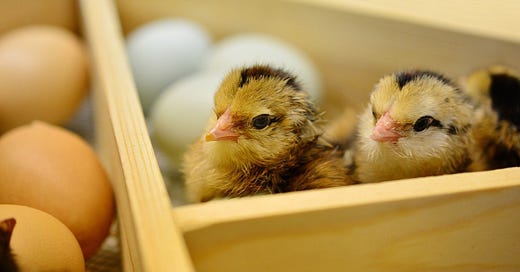U.S. President Franklin D. Roosevelt once joked about British Prime Minister Winston Churchill, “[Winston] has a hundred ideas a day, of which four are good.” I can totally relate! Give me one or two factors and a set of constraints, and I can generate dozens of ideas - some good, some middling, and some just plain silly.
For nonfiction writers, being able to generate ideas is essential. If you aren’t working on assignment, your livelihood depends on your ability to craft enticing book pitches, magazine queries, or collaborative proposals. These ideas can’t just sound good to you; they have to fit with the goals of the platform you’re aiming for AND not be similar to a recently run story.
There’s good news and bad news about finding new writing ideas. The good news? You can find writing ideas - literally - anywhere. The bad news? Writing ideas almost never arrive fully formed. Intriguing concepts need to be nurtured and tended before the pieces come together. Here are some techniques for incubating writing ideas, along with some further suggestions for once you’ve found your killer idea and are ready to unleash it upon the world (or at least a few unsuspecting editors).
Keys to Incubating Winning Ideas
Graham Wallas, an early 20th century psychologist, was one of the first to assert that incubation plays an important role in developing creative ideas. His proposed sequence for creative ideation was based on four steps: Preparation, Incubation, Illumination, and Verification.
The importance of beginning with Preparation is obvious enough. Immersing oneself in a particular topic and using research and observation to expand one’s existing knowledge sets the stage for new questions and arguments to emerge. Especially when writing about the “real” world, it helps to be familiar with the topic.
The next step is to take a break and step away from your preparations. Don’t go too far, though! I’ve always pictured myself at a coffee shop, chattering away while drinking Americanos with friends, and excusing it as “idea incubation,” but studies related to idea creation by researchers from the University of California Santa Barbra and the Max Planck Institute for Human Cognitive Brain Sciences suggest light activities that look more like the following:
Do the dishes (drat! No excuse for not doing chores!)
Pick out your outfit for tomorrow
Do some light reading on a topic unrelated to your idea
Take a walk
Journal or write in your diary
What do all these activities have in common? They present a mild challenge to your brain - nothing too hard, nothing too easy. With your brain already primed to do the work, the incubation task lets the subconscious connect the dots for your idea to come together while you do something else.
When your idea finally coalesces, you may experience a euphoric “aha” or Eureka moment, or perhaps just a happy mental nudge telling you that, yes, this is a good idea. That’s the Illumination part of Wallas’s theory!
What’s Next? Shape And Share Your Idea
This is a step many writers skip, especially when managing opportunities to share their idea with others. There are reasons to be open to sharing an incubating idea with other people - including your nonfiction-writing peers.
You may find outside perspectives lead to valuable insights (Illumination, again). Your idea will inevitably bear your own unique stamp when it becomes a story, but you may find yourself making new connections.
Discussing the idea repeatedly forces you to sharpen what you’re talking about. The more clearly you can explain it, the more likely an editor or agent is to be interested in it.
Your network of friends and professional contacts may provide you with access to contacts or suggest story angles you might not have previously considered.
Once you feel confident your idea is ready to test out on editors or other writing platform gatekeepers, you will be faced with the hardest part of tending your fledgling idea: sending it out into the world.
After The Shaping Comes The Doing
No matter how compelling your writing idea is, you have to bring it to life through communicating it to someone who will publish it, or by actually writing your story and self-publishing it. You cannot patent or copyright an idea; they are as insubstantial as ghosts until you act on them, or write them. That is why Graham Wallas didn’t stop with Illumination or the “aha moment” in his theory of creativity – he included Verification to emphasize the importance of testing one’s idea through constructive activity. Building positive habits is among the most constructive of activities.
A number of years ago, I wrote a blog post about the six master habits of creative success. Three of them are especially important to writers with new ideas to implement:
Get in the habit of writing, not just talking about writing. In my post, I simply labeled this habit, “Begin.” Writing makes writing happen; talking does not. In my initial True Story newsletter, I touched on how my use of a daily mind-dump notebook has helped me sustain a writing practice that's building my freelance work.
Document your ideas. One of the riskier aspects of only “talking out” your ideas is that they can get lost or fuzzy over time. Preserve your ideas in notebooks, audio files, video clips, or by using an ever-expanding array of online apps and tools.
Structure your life to support writing. It’s not enough to say, as the main character did in the 1987 movie Throw Momma From The Train, “a writer writes, always.” It’s essential to set up a schedule and an environment(!) allowing you to do all the things that make you ready to write when you sit down to write.
That’s it for this month! If you have feedback on this article, or want to talk about your methods for taking care of your emerging writing ideas, just hit reply to this newsletter. I look forward to hearing your thoughts!
Until next time, wishing you long days and pleasant nights.





